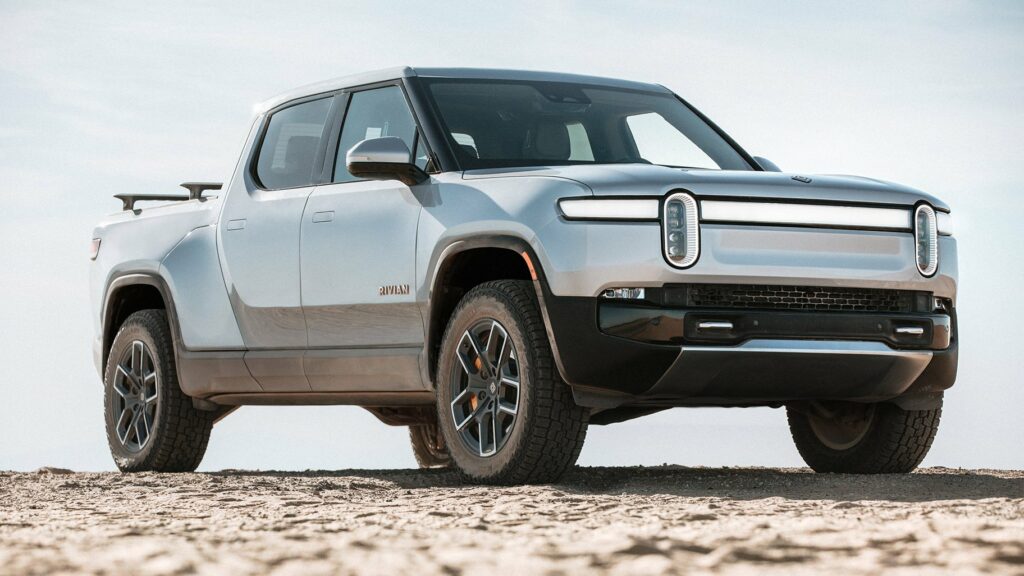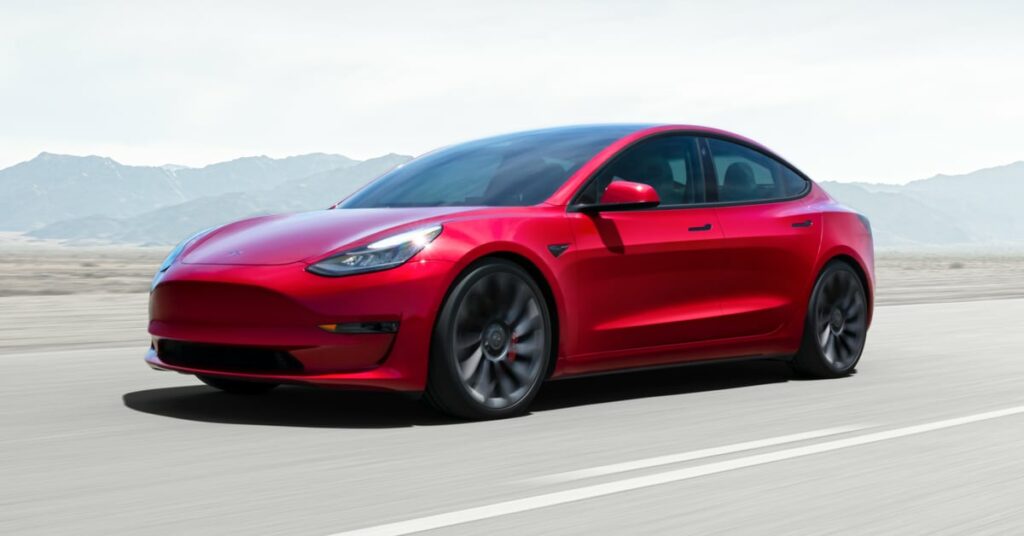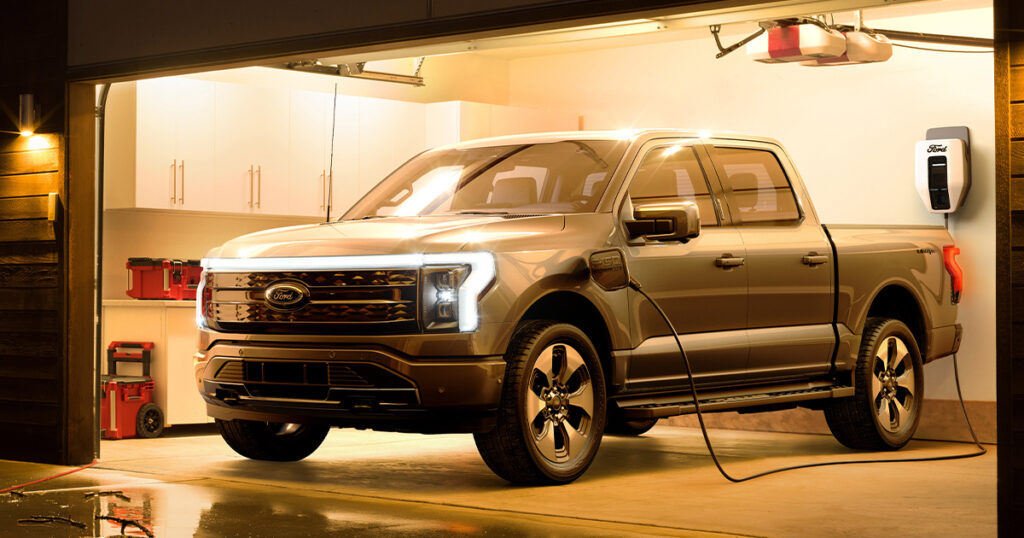2023 Update: Major revisions to the EV tax credit were signed into law as part of the Inflation Reduction Act of 2022.
Here’s what you need to know about the latest EV tax credit revision proposal:
- The 200,000 sale cap is replaced with an expiration date of December 31, 2032.
- It will bring the tax credit back for Tesla, GM, Toyota and all other EV automakers, but only if strict requirements are met.
- Vans, SUVs, and trucks with MSRPs up to $80,000 qualify. Electric sedans priced up to $55,000 MSRP qualify.
- The tax credit will remain at $7,500, however it is now divided into $3,750 for battery mineral sourcing and $3,750 for battery component sourcing.
- Final assembly must be in the United States, Canada or Mexico as soon as the bill is signed into law.
- Battery minerals must be at least 40% sourced in the US or countries we have free trade agreements with until 2024, when it will begin to increase incrementally by 10% through 2028.
- Battery components must be at least 50% sourced in the US or countries we have free trade agreements with until 2024, when it will begin to increase incrementally by 10% through 2028.
- It will become income-limited to individual tax filers with adjusted gross incomes of $150,000 or less, and joint filers with incomes of $300,000 or less.
- The tax credit can be implemented at the point of sale instead of on taxes beginning on January 1, 2024. This effectively makes it a rebate. Before this date, it remains a tax credit.
- Used EVs would now be eligible for a $4,000 federal tax credit, wit a price cap of $25,000. Used EVs must be at least two years old, and the used credit can only be claimed once in the life of the vehicle.
- Tax filers can claim only one used EV tax credit every three years.
- Plug-in Hybrids (PHEVs) are eligible, but must meet the same strict requirements above.
- The Transition Rule allows for buyers with a “written binding contract” signed before the Inflation Reduction Act is signed into law to claim the original $7,500 credit. This includes any models that will lose the credit with the revision.
As you can see, the EV tax credit is becoming a lot more complicated.
All 755 pages of the Inflation Reduction Act can be read here. The EV tax credit begins on page 381.
The EV tax credit update is not all good news. Several popular electric models would be kicked out of the tax credit until assembly, battery production and raw materials sourcing happens in North America.
These are electric vehicles that would not qualify for the tax credit under the proposed revision:
- Tesla Model 3 (too expensive, RWD batteries produced overseas)
- Tesla Model S and Model X (too expensive)
- Rivian R1T and R1S (too expensive)
- Lucid Air (too expensive)
- Hyundai IONIQ 5 and Genesis GV60 (produced in Korea)
- Hyundai Kona and Kia Niro electrics
- Kia EV6 (produced in Korea)
- Nissan Ariya (produced overseas)
- Volvo and Polestar EVs (produced in Europe)
- Fisker Ocean (produced in Europe)
- Toyota bZ4X (produced overseas)
- Subaru Solterra (produced overseas)
Official eligibility is a moving target it seems. We recommend checking the latest updates directly from the U.S. government at fueleconomy.gov for a list of eligible vehicles.
But don’t forget about state incentives…
See the states with the BEST EV incentives, from sales tax exemptions to generous rebates!
Get the most when you sell your car.
Compare and choose multiple offers in minutes:
In 2023, current EV tax credits are nonrefundable, meaning the best you can get from the current EV tax credit is cancelling out other federal income taxes you owe, with no refund beyond that. The revised electric vehicle tax credits will become refundable beginning in 2024, meaning you could potentially get money back from the government for simply buying an EV.
Thinking about buying an extended warranty? Get a free quote from CarEdge first!
Let’s break down the proposed 2022 EV tax credits. Don’t forget to check out the best state-level EV incentives too.
No More $12,500 EV tax credit

The Build Back Better Act would have increased the maximum electric vehicle tax credit to $12,500, however it was defeated in Congress. The BBB EV tax credit provisions controversially included an additional $4,500 incentive for EVs assembled at unionized plants.
The original EV tax credit in place from 2009 to August 2022 took away the incentive once an automaker sold 200,000 EVs or PHEVs. For this reason, Tesla and GM had lost eligibility, but are now getting it back (as long as vehicles remain under the price caps).
EV tax credit income limits
The new clean vehicle credit establishes the following income caps based on adjusted gross income (AGI):
- $150,000 for single filers
- $225,000 for head of household filers
- $300,000 for joint filers
EV tax credit price caps
- Sedans are capped at $55,000
- SUVs and trucks are capped at $80,000
- Once the used EV tax credit begins in 2024, it is capped at $25,000
What vehicles qualify for the new EV tax credit?

Great news for Model Y buyers, but bad news for fans of the IONIQ 5, EV6 and several other foreign-made electric cars. The Inflation Reduction Act’s Clean Vehicle Credit returns incentives to some, and takes incentives away from others.
- The Tesla Model Y will qualify for the new tax credit, as long as price remains below $80,000.
- The RWD Model 3 will qualify IF Tesla sources batteries from the US or Free Trade Agreement countries. Right now CATL from China makes their LFP batteries.
- GM electric vehicles such as the Bolt EV and EUV will again qualify.
- The Mustang Mach-E will qualify, as long as batteries are sourced from Free Trade Agreement countries.
- Kia and Hyundai EVs will NOT qualify until they are assembled in North America.
See the FULL list of qualifying electric vehicles here.
This page will update as we learn more about proposed updates to EV tax credits in 2022.














There is a Ford Escape plug in hybrid (2021-2022) Would that not be eligible for the proposed credit?
It should be. Good catch!
Hi Zach – how would the Escape plug-in hybrid qualify? Everything I read seems to say that to qualify a vehicle needs to have a 40 kilowatt battery. My understanding is that the Escape plug-in hybrid has a ~15 kw battery. There also seems to be a maximum size limitation for gas tanks (2.5 gallons maybe) in the proposed law. So it seems to me that these requirement would exclude pretty much all plug-in hybrids from qualifying…but I could be missing something! Thanks!
Pat, you’re spot on. The language is still being worked through the Senate, so it will likely evolve a bit, however what you’ve stated here is 100% correct as far as what as passed the House so far. We’ll update the list above as soon as the bill passes the Senate.
Pat, I have completed a text search of HR 5376 that passed in the House. I searched for “2.5”, “gas tank”, “gasoline tank”, “maximum size” and found nothing that would be a limit for the EV tax credit. Plug-in hybrids would be eliminated from the EV tax credit if this 2.5 gallon limit were true. Do you remember where to saw this limitation?
Hi Tom,
I’ve seen a bunch of articles that mention it. Here’s one: https://www.cnet.com/roadshow/news/ev-tax-credit-biden-bill-senate/
But as far as what’s in HR 5376 that passed the House, I think you’re right. I couldn’t find anything in there about the gas tank size in there either. Maybe that was in an earlier or different version? And I drilled down a little more about the battery size limitation. From what I can tell the bill defines a “New Qualified Plug-in Electric Vehicle as one that has a battery capacity not less than 7 Kwh (changes to not less than 10 Kwh after 2023) (page 1872-3 of the HR76 (per my pdf version)). If the vehicle meets that definition, there’s a $4,000 base tax credit (p. 1869). If the battery capacity is over 40 Kwh, then there’s an additional $3,500 tax credit (p. 1869). Then after that is the the controversial $4,500 domestic assembly/union and the $500 domestic content (including battery manufacture location) tax credits and requirements. The domestic assembly and content language is on pp. 1879-1880).
So, if I read this right, RAV4 Prime purchasers would get a $4,000 tax credit, and Ford Escape PHEV purchasers would get $8,500 or $9,000 in tax credits (not sure about where the Escape batteries are made).
Pat and I agree that writers like Sean Symkowski at CNet made a mistake and there is no limitation of 2.5 gallon gas tanks in the final version of HR5376. I recommend Zach remove that from his article.
As for who gets how much.
I think RAV4 prime gets $4,000 base and $3,500 more because it has a battery with a capacity not less than 40 Kwh. It is shipped into the US from Japan.
I think Escape PHEV gets $4,000 base, not the $3,5000 extra because battery is below 40 kwh. Then add $4,500 for domestic/union assembly in Louisville, KY. There maybe add an additional $500 for domestic battery content. I believe the battery pack is assembled in Rawsonville, MI. I saw a press release that the small battery pack used in the gas hybrid (not plug-in) was assembled in Rawsonville. I do not know where the battery cells are made. They might come from overseas.
What about Chrysler Pacifica Hybrid? Does that qualify? I know on their website it says it does but this list somehow excludes it.
That’s on me, Ryan! Updating right now! Based on the current language in the bill that would be eligible for $12,000 in tax credits.
I know with previous credits there was a rush on the large multi seat golf type electric carts. Let’s just say the gray area was exploited in the credit verbiage. Any room here for that
It seems like the 2.5 gallon gas tank limit would exclude basically all hybrids, right? For example: The Ford Escape plug in has an 11 gallon tank. Am I reading the qualifications right?
You’re spot on, Mark. We’ll have to see what changes happen now that the Build Back Better bill is in the Senate.
The Porsche Taycan retail price would exclude it from the tax break, no? Cars capped at $55000, right?
You are 100% correct, Charlie.
What can you say about the Hyundai Ioniq 5, Kia CV 6, and further down the line Toyota/Subaru electrics that will be coming around mid year? Is my best course of action, waiting until Build Back Better is finally signed?
Staying patient and waiting until the bill passes is the best bet.
Zack,
Thanks…..
You guys have a great site……
Enjoy the Holiday….
Ed
Why are old cars shown here if used cars are not eligible for the full tax credit? Surely you won’t find a new 2014 Toyota Rav4.
John, we will update this list ASAP once Congress passed the Build Back Better bill.
What about the Jeep Wrangler with the 4xe plug in hybrid engine? That engine is supposed to be made available in the new Jeep Grand Cherokee as well.
Ken, the fuel tank is too large on the 4xe to qualify based on the current bill’s language.
How will dealers claim the tax credit at the point of sale if the credit is subject to income limits? Does this mean the discount would be calculated based on the previous year’s tax return?
Robert, great question. Each dealership will handle this differently, however when they run your credit they’ll have a pretty good sense for if you qualify or not.
I wanted to add two concerns for the readers. First, it is not very difficult to take the vehicle MSRP over the limit ($55,000 for sedans see page 1871 of HR5376). I checked the Tesla Model 3 website and it seems pretty easy to exceed the limit if you order extended range and maybe red paint. If you exceed the MSRP (page 1871), “no credit shall be allowed.” So you get nothing!
Second issue – what’s a sedan, what’s a SUV. I am interested in a Ford Mach-e and it sure looks like an SUV. However, as a You Tube person named Bearded Tesla Guy has pointed out, the HR 5376, says (page 1874) that the law would follow the regulations prescribed by the Environmental Protection Agency. If you go to Fuel Economy dot gov, compare side by side, Specs tab. You can see the classifications. Tesla model 3 is a midsize car under the sedans subcategory and Ford Mach-e is a small station wagon. I know the mach-e looks like an SUV but it is not under the SUV category. From the website, any Mach-e Premium with extended range, or Mach-e Route 1 AWD will get you over the $55,000 limit. I love the vehicle but the extra range is what I need to reach the family at the holidays without stopping.
Any idea whether these new rules will be retroactive for vehicles purchased any time in 2022, or will they apply to cars purchased after the bill is passed (assuming it passes).
Jeff, it’s unclear right now whether that would be the case or not. We’ll let you know once we see the new proposed language.
I find it strange that many of Ford’s Mach e configurations come in at ‘just’ over $55K. Like ordering Premium package with extended range battery option, comes in at $55,100. The California Route 1 package with extended range option comes in at $55,475. Wouldn’t it make sense for Ford to adjust these prices slightly to accommodate the $55,000 limit for tax credit since Extended Range is a popular choice for EV buyers?
Here in NJ, there was a state incentive, with $55k cap for vehicles MSRP to be eligible. I would think Ford would recognize the opportunity to market Mustangs price-wise to make more of it’s cars available for these tax incentives.
Slightly off topic but for 2021 taxes, was Dec 31 the deadline to buy an EV and get the credit or is it like contributing to your Roth IRA and you have until April to buy one and you can still count it on your 2021 taxes?
As of the last week, it is clear that Toyota, significantly, and also Nissan and Ford, may soon be in the same category as Tesla and GM, as Toyota will hit 200,000 of EV sales by early summer and the others soon after. That means there is a ramping down by half of the credit available, and then after that it goes to zero as it is for Tesla and GM. Weirdly, this means that basically the credit really (in the existing markets) exists primarily for the Korean companies, and possibly for BMW, if they can ever finish building their plant in Tennessee.
Does anyone know which website to check whether Ford has sold 200,000 EV for $7500 Tax credit because I am still waiting for the reserved F-150 Lightning. Thank you and have a nice weekend
Hello! This site should help: https://evadoption.com/ev-sales/federal-ev-tax-credit-phase-out-tracker-by-automaker/
Remember that once 200,000 is reached, the tax credit does not end immediately, it begins to phase out.
Hi do I get rebate EV pickup truck made Chinese manufactured, I paying underS12.000,00 Canadian dollars?
What about the Cadillac Lyriq. Will it qualfy?